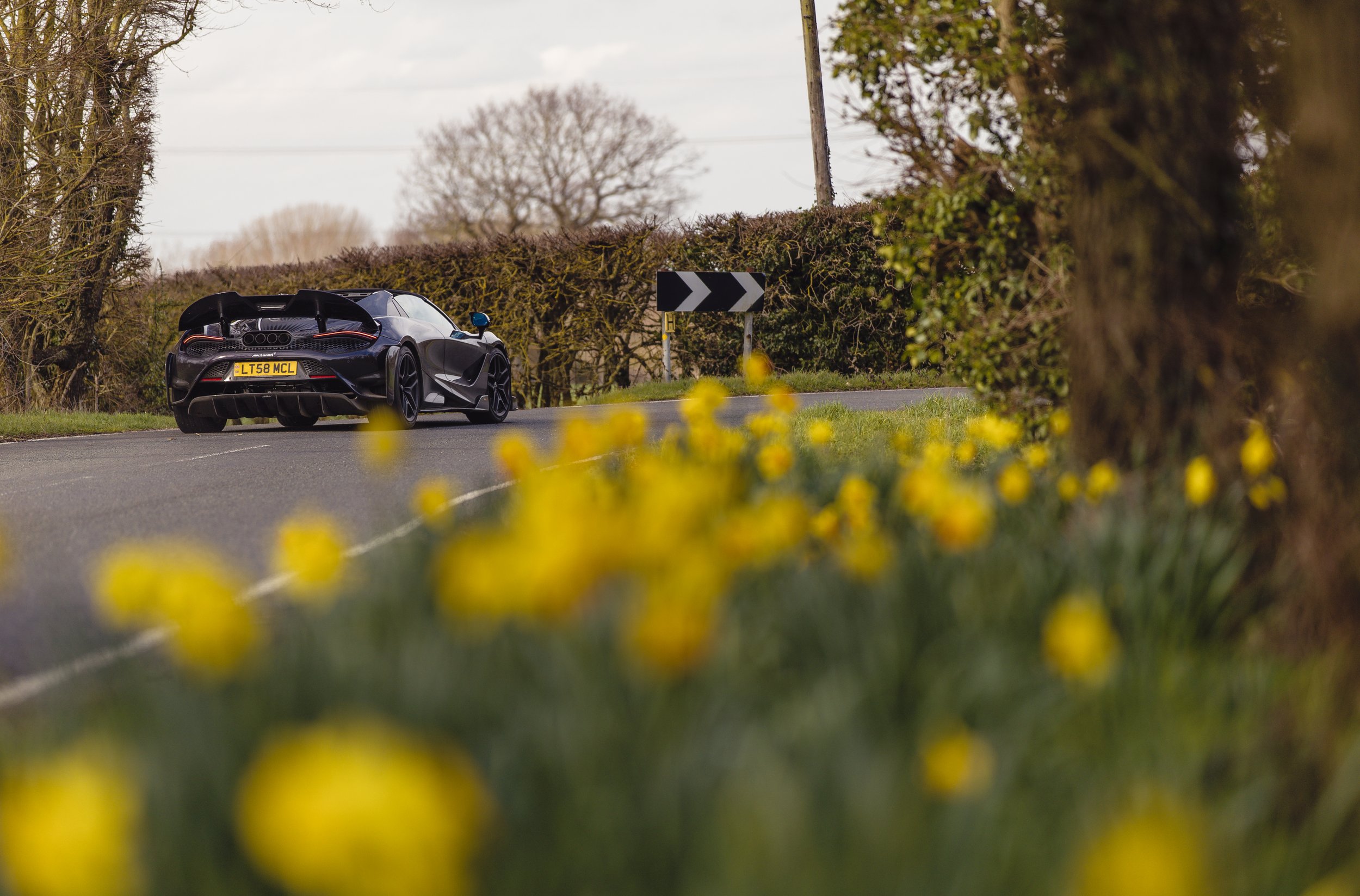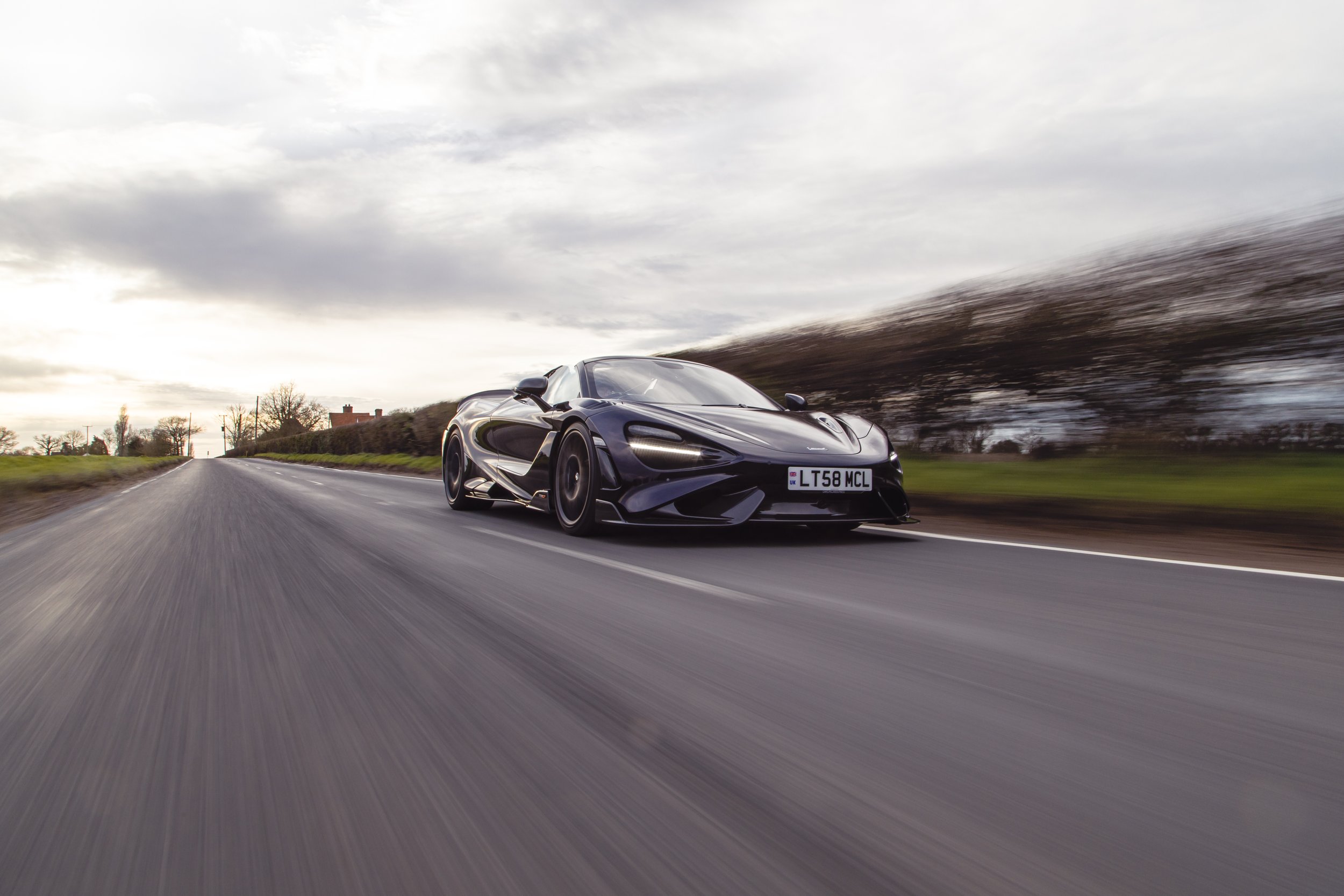
Road Test: McLaren 765LT Spider
Mark drives the hardcore, track-ready version of McLaren’s stunning 720S supercar - the 765LT Spider
WORDS: Mark Rose | PHOTOS: Dom Ginn
Longtail. It’s a name steeped in McLaren history and one that first appeared on the F1 GTRs that were raced in 1997 owing to their elongated rear overhangs. Only 10 were built including the development prototypes and they won their class at the Le Mans 24 Hours with an overall finish of second and third. However, since the dawn of McLaren’s road car era, the LT name has appeared on the manufacturer’s track-inspired production vehicles, starting with the 675LT, then the 600LT and more recently the 765LT. Each of these cars represents the purest iteration of their lineage, with the latter building on the already wild 720S.
With 720S production coming to an end ahead of the release of the new 750S, we took the opportunity to grab a McLaren 765LT Spider for a week to see what the ultimate expression of one our favourite supercars is like to drive, and in a nod to its motorsport pedigree, we even took it to a racetrack, but more on that later.
In typical McLaren fashion, the LT isn’t just a faster 720S with a desirable badge, but a significant overhaul of a car that never needed to be a) any faster, or b) any more focussed, not for a road car at least. However, contrary to the impression that McLaren lack a sense of humour, the boys and girls at Woking have shown little self-restraint in ensuring that the 765 is as wild a road car you could go searching for. Where some supercars charm you with their theatrics, the LT leaves you with your eyes wide open and your jaw in your lap with its fighter jet aesthetics and utterly shocking performance.
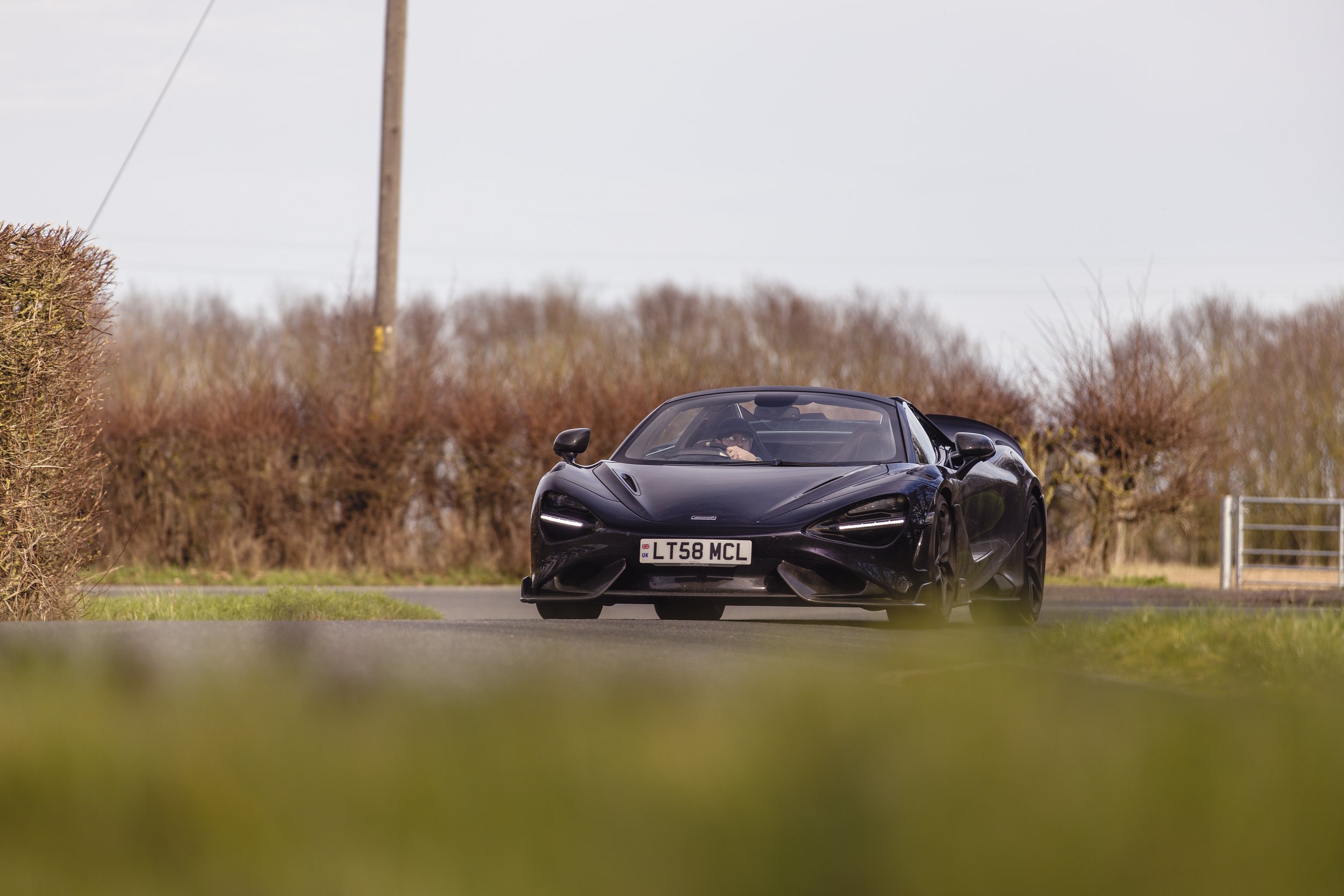
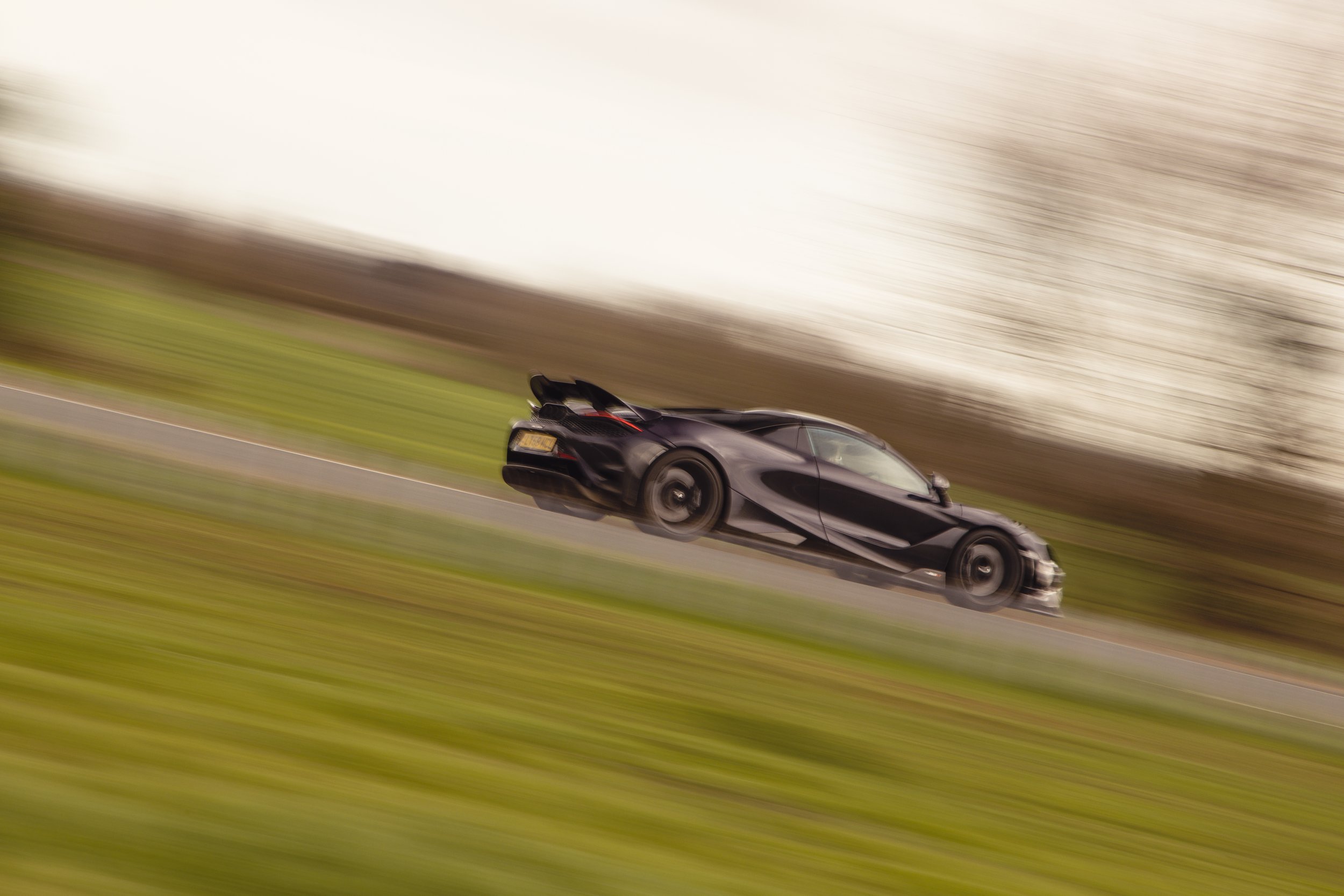
To turn a 720S in to a 765LT, McLaren has bumped the power output from the twin-turbocharged 4.0 litre V8 engine to 755bhp, weight is down by 80kg bringing it to 1,388kg at the kerb, the gear ratios in the seven-speed dual-clutch transmission have been shortened, and it benefits from a new titanium exhaust, bespoke springs and dampers, and you can even spec the brakes from the Senna hypercar if regular track work is on your agenda.
The results are astonishing. The LT isn’t just a marginal improvement over a 720S, but one that cranks the dial all the way up eleven. To even call it a supercar seems like a misjudgement, because the 765 is all hypercar, from the way it accelerates to the manner with which it decimates a B-road. At this point, reading the spec sheet is almost meaningless because nothing prepares you for how the performance makes you feel. Zero to 62mph takes 2.7 seconds, 124mph is seen in an eye watering 7.2 seconds, and the top speed registers at 205mph. Note that the VMAX is 6mph less than a 720S. That’s to do with the shorter final drive but it’s a reasonable trade-off when you realise how much faster it feels than the car the LT is based on, besides, rarely does anyone ever max out their car. In a straight line it’s a monster. It offers acceleration so intense that it must be felt to be understood, and even then, it’s a struggle to get your head round the way it seemingly bends the very properties of space and time. It’s warp drive for the public road.
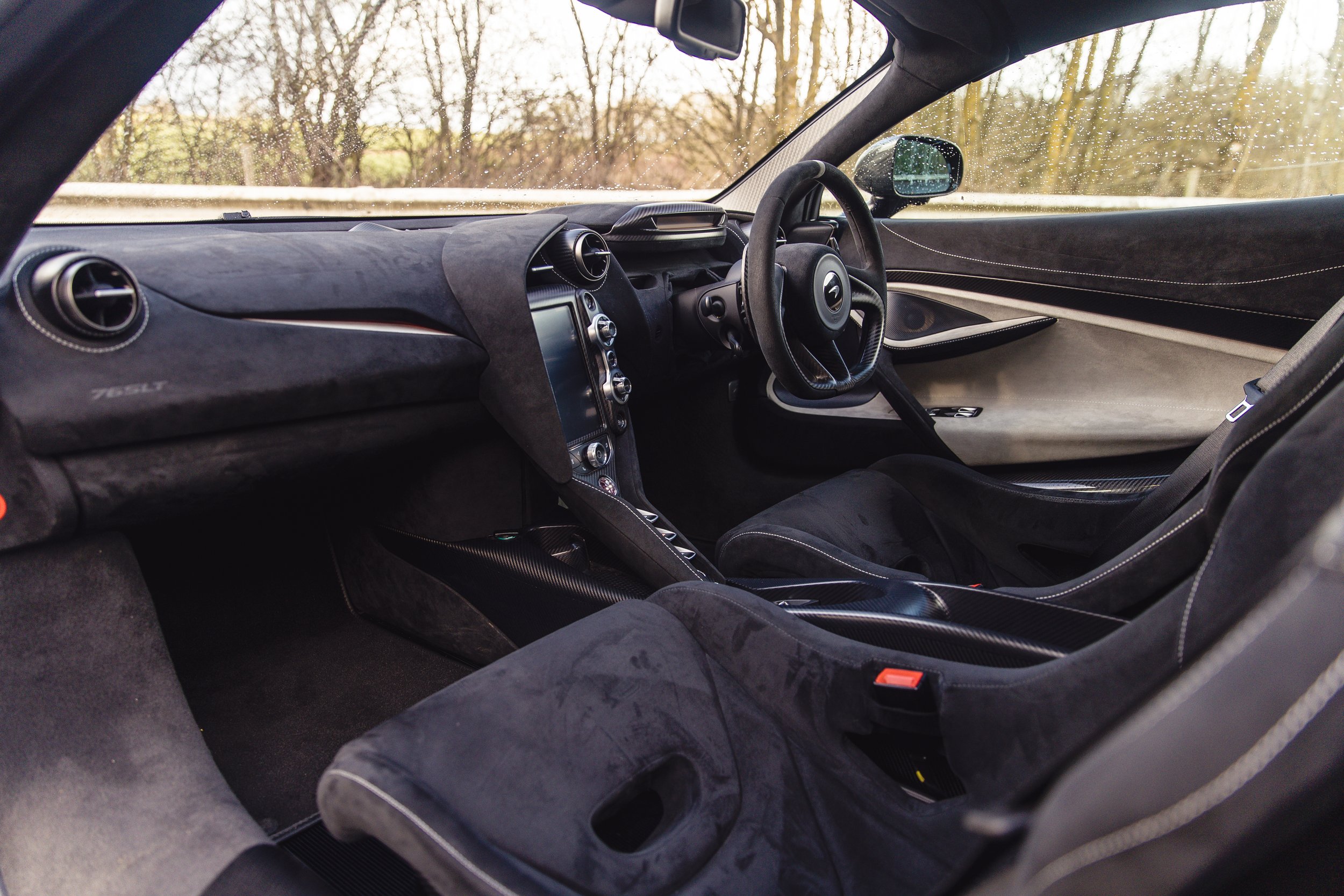
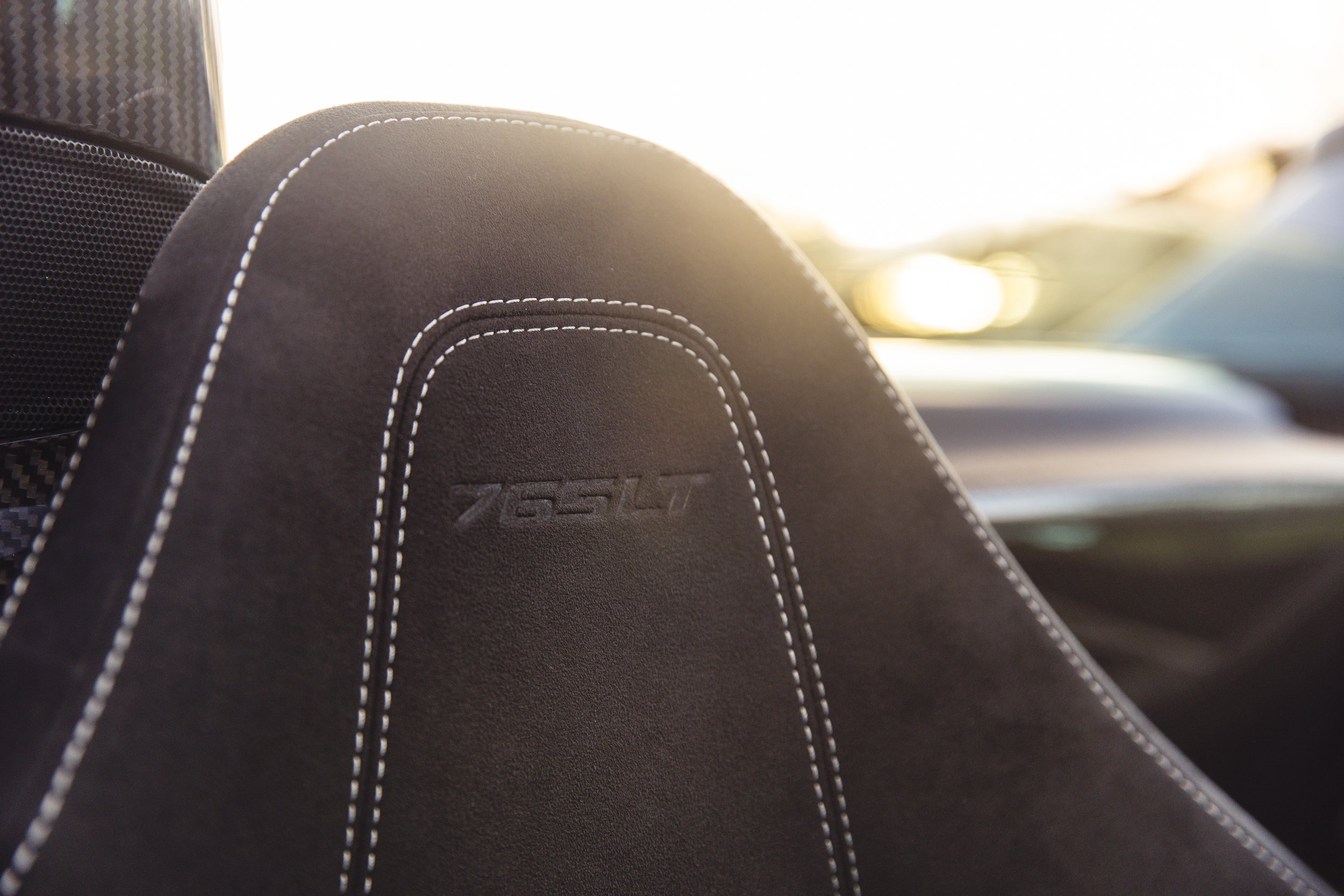
And then there’s the benefits of driving the Spider. Weighing just 50 kilos more than the coupe, there’s no difference in the way it performs, and with the roof off you also get to experience the full ferocity of the titanium sports exhaust which pops, bangs and even spits flames on occasion. An engineer from McLaren told me that the Spider also feels more dialled in to the road than the coupe, a car which has a reputation for being spiky. Given the amount of power going through the rear wheels, the extra slither of weight probably aids traction and helps keep the rear in check, but McLaren has also softened the dampers and the steering is a touch slower than in the coupe. However, these small changes haven’t turned the drop-top LT in to a softie, because one of the main differences between the LT and a 720S is how playful it is. Where the base car often feels a little too locked down, the 765 moves around and offers up a more dynamic driving experience. It requires you to think ahead more and be gentler with your throttle application, otherwise that elongated rear end will get out of shape. It makes the LT more of a challenge, but also more entertaining and rewarding.
In truth though, you’re never getting anywhere close to its potential on the public highway, such are the limits of grip and performance. Across a country road, it’s hard to think of anything else with number plates that gets anywhere near the 765LT in terms of pace. A more rigid supercar would be unsettled by our bumpy, broken roads, and there’s nothing else that offers the kind of dynamic prowess and relative surefootedness that the McLaren possesses. Then there’s the detailed feedback of the road surface it provides through the hydraulic steering and the seat of your pants. For a twin-turbocharged car with 755bhp, it also has fantastic throttle response. All of this adds up to a truly sensory driving experience. Where some supercars feel like they do the hard work for you but leave you feeling a touch distant, you feel like you’ve driven the LT. Every input is met with a near instant response, from the way the nose dives in to a corner, to the excitement with which the engine delivers its prodigious power. The seven-speed dual-clutch gearbox is whipcrack fast on the down change, and the carbon ceramic brake discs with pads from the Senna hypercar rearrange your internal organs when called upon.
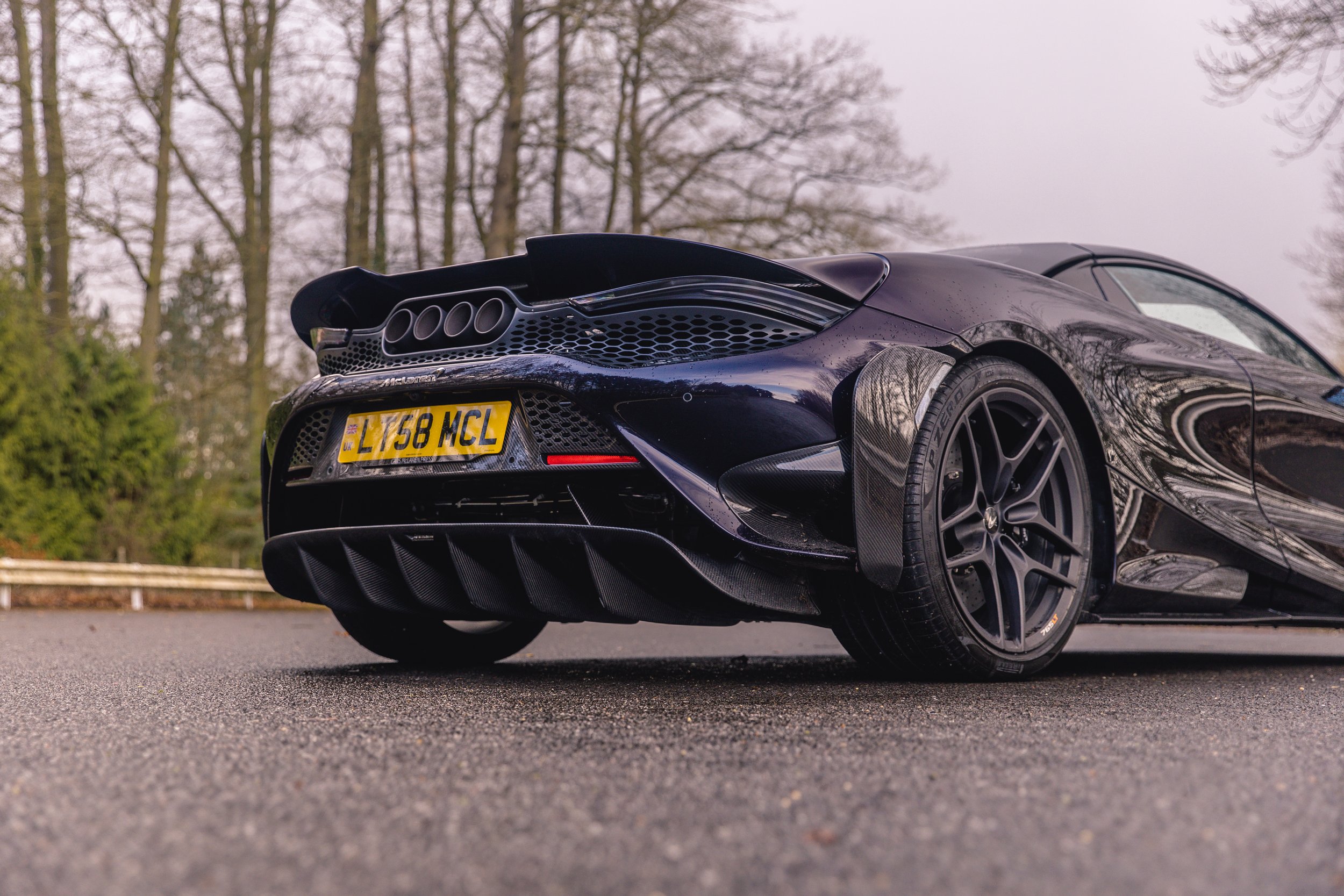
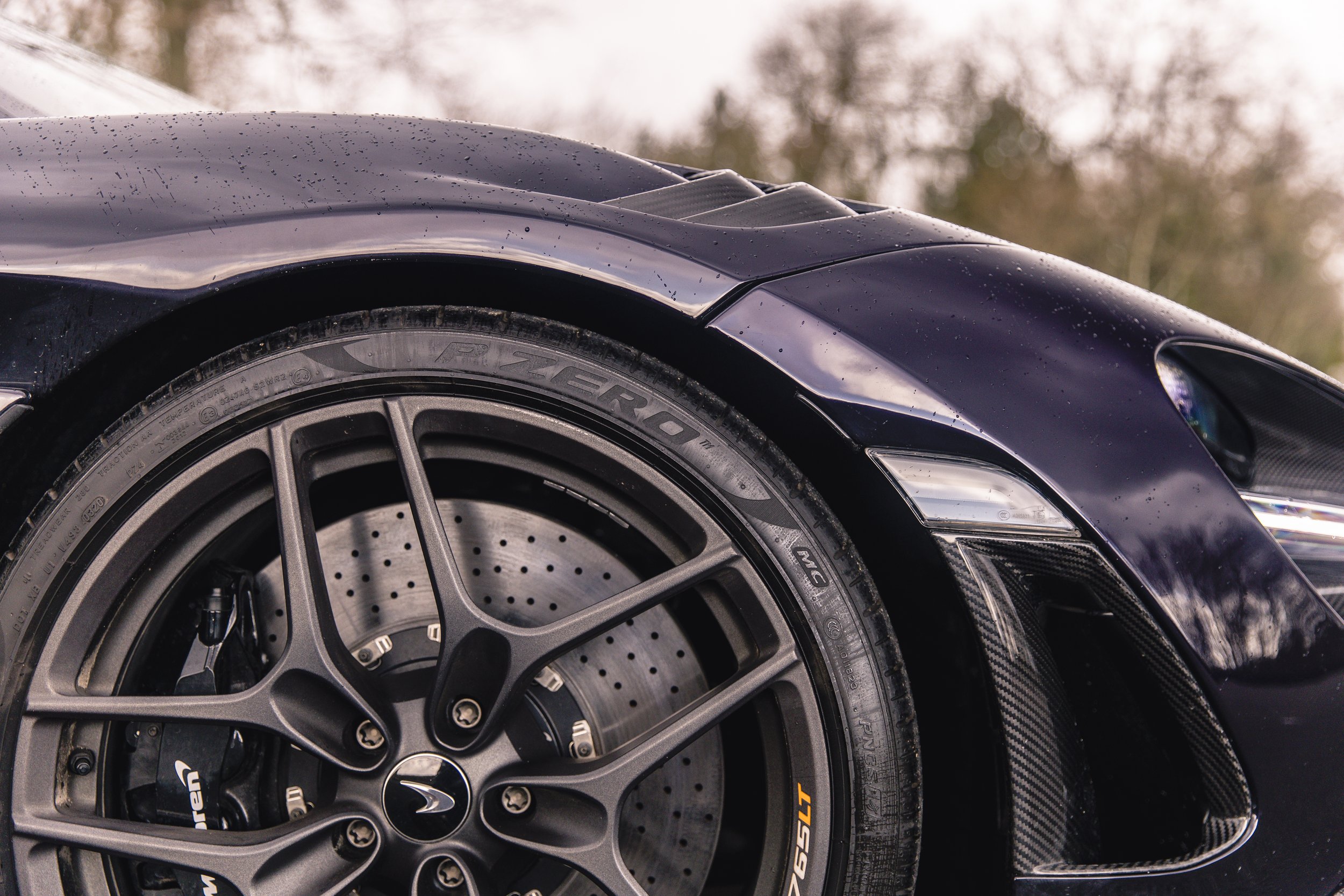
However, the true magic comes from how each element gels with the other to create a car that feels cohesive. The straight line speed is truly out of this world, but objectively it doesn’t feel any more outstanding than the steering, body control, brakes and ride quality. The 765LT is more than the sum of its parts, a fact which became apparent on one of my final drives before McLaren came to collect it after a week’s worth of seat time. I have a number of regular testing routes, one of which is particularly well trodden, and on this very road the LT transported to that special place where only the best performance cars go. That place where it’s just you and the car operating as one, that moment where you’re decimating a twisty stretch of road at real speed, yet somehow time seems to slow down. A moment in time where you forget all your troubles and you become absorbed in the pleasure of driving. It was driving nirvana, and when it was all over, I hopped out the car an enlightened man as I’d come to the realisation that what I had just driven was absolute perfection.
However, one of the main reasons we had the LT that particular week was because our time with it coincided with the Intelligent Money British GT media day at Donington Park. There are a number of McLaren customer racing teams that compete in the championship so it made sense to display the LT at the event for teams, drivers and punters to see. Donington Park is also a three hour drive from where I live, so it offered me an excellent opportunity to see how this track-honed supercar faired over a long distance. Needless to say, it’s not a daily driver. It’s certainly habitable and you can easily complete a long trip in it, but you would grow weary if you used it every day as like every other supercar, it’s compromised in some way. In this test car, it was the P1 seats which we’re unforgiving after a long stint behind the wheel.
As we drove in to the paddock at Donington, we were greeted by the sight of the 765LT’s predecessor, the now legendary 675LT. The release of the 675 pre-dates my career as a road tester by a few years, however, I do know that it represents something of a watershed moment in McLaren’s road car history. Early models like the 12C and 650S were hugely capable while lacking in personality, but the 675LT is the car that people recognise as the model which helped the company find their mojo. I’m fortunate in that over the last few years, I’ve driven a lot of McLaren’s and each one has been outstanding in its own way, but the 765LT is a different beast. It’s animalistic, unhinged and at times, too much performance car for the public highway, but that’s what makes it one of the finest cars you could ever wish to drive.
Engine: V8, twin-turbo
Displacement: 3,994cc
Power: 755bhp @ 7,500rpm
Torque: 590lb ft @ 5,500rpm
Transmission: 7-speed twin-clutch, RWD
0-62mph: 2.7 secs
VMAX: 205mph
Kerbweight: 1,388kg
Price: £300,000+ (when new)
Technical Specifications
They’re all sold so unless you have circa £350,000 to spend on a used example, keep dreaming. However, for the lucky few, this is one hell of a road going, track day weapon.
10/10
Verdict & Rating
“Across a country road it’s hard to think of anything else with number plates that gets anywhere near the 765LT Spider”
Watch the YouTube video
